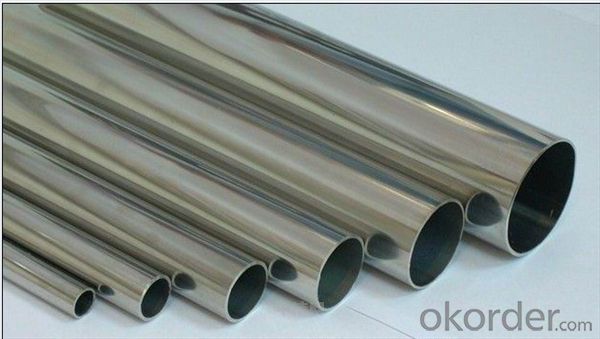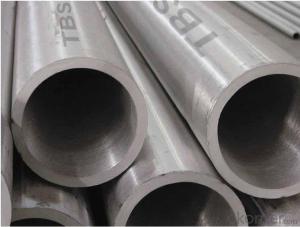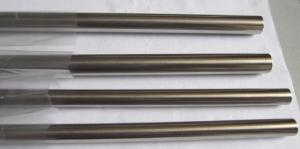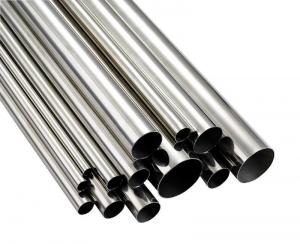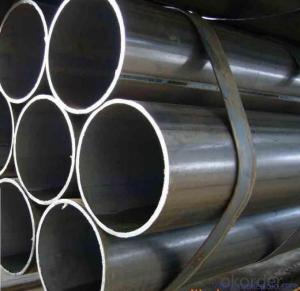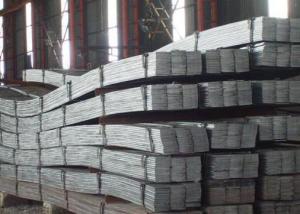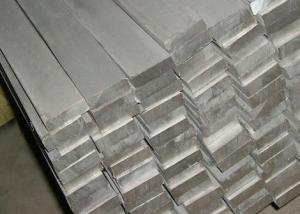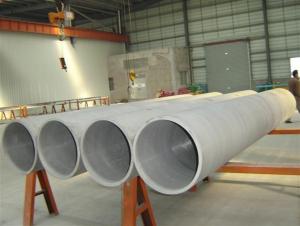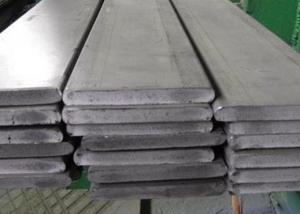P22 Seamless Ferritic Alloy-Steel Pipe for High-Temperature
- Loading Port:
- Shanghai
- Payment Terms:
- TT OR LC
- Min Order Qty:
- 1000 kg
- Supply Capability:
- 10000 kg/month
OKorder Service Pledge
OKorder Financial Service
You Might Also Like
Product particular communication:
1) Size: OD > 6.35 mm & Thk > 0.89 mm ;
2) Tight tolerance, Smooth surface, Uniform mechanical property(Mechanical Properties equilibrium) ;
3) Heat treatment: BK, BKS, GBK, NBK,Stress Relief, Normalizing, Spheroidize Anneal, Annealing, Bright Annealing, Normalized, Quenched and Tempered, Solution Annealing, etc ;
4) Continuous stenciling as required ;
5) Rust prevention treatment, such as: immersion oil, lacquer, passivation, phosphating,etc;
6) Plastic plugs or caps on both ends as required ;
7) Packaging: Hexagonal bundles of max. 1,500kg with several steel strips, Wrapped in waterproof paper, PVC sleeve,and sackcloth with several steel strips or packed in heavy tri-wall boxes, wooden boxes, wooden slats as requires;Type: Round , Square, Rectangle, Hexagon. Streamline, etc;
ASTM A335 Seamless Alloy-Steel Pipe
Standard: BS 1139, BS 3059-2, JIS G3454-2007
Grade: 10#-45#, 15NiCuMoNb5, 10Cr9Mo1VNb
Detailed introduction to ASTM A335 seamless alloy steel pipe:
ASTM A335 seamless alloy steel pipe
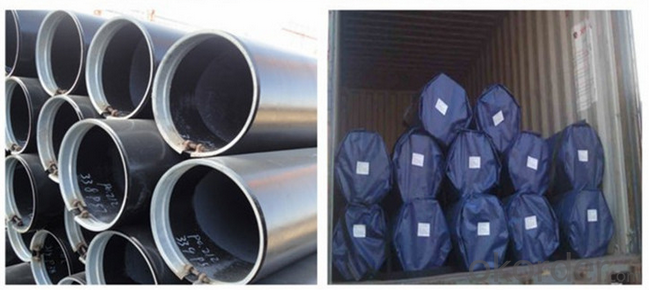
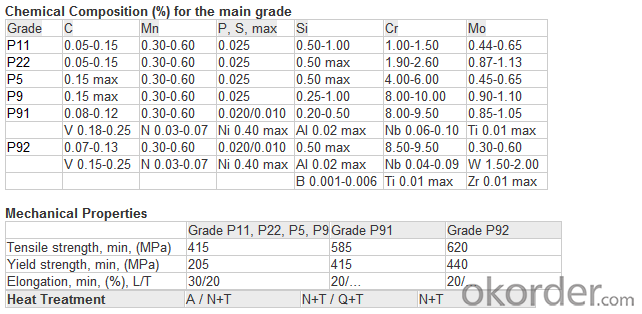
FAQ:
1) why you chose us ?
Professional Manufacturer and supplier of Steel pipe
More than 14 years’ professional producing experience
We can get the lowest ex-factory prices. The price are quite reasonable and it is lower than our commercial peers. also, we can guarantee the qualities of our products.
BV, ISO certificates and SGS test can be provided to assure the quality of our products.
2) Our minimum order quantity:
10 Metric Tons or one 20ft or 40ft Container.
3) How about the Delivery Time?
The steel pipe will be produced since we getting your deposit by T/T or Your original L/C. For normal size, some stocks in our factory now, we can supply once you need.
4)What kind of payment does your company support?
T/T, 100% L/C at sight, Cash, Western Union are all accepted.
5) Do you charge for the samples?
According to our company principle, we just charge for samples, you pay for the freight /courier charge.
6) Main market:
Mid East, South America, Africa, Southeast Asia, India etc
- Q: Can stainless steel pipes be used for gas supply?
- Indeed, gas supply systems can utilize stainless steel pipes. With its exceptional durability and resistance to corrosion, stainless steel proves to be an ideal material for a wide range of applications, including gas supply. Its capability to withstand high pressures and temperatures guarantees the secure and efficient conveyance of gas. Moreover, stainless steel pipes boast an extended lifespan and demand minimal maintenance, making them a dependable option for gas supply infrastructure. Nonetheless, it is crucial to ensure that the stainless steel pipes are meticulously designed, installed, and compliant with industry standards to uphold the safety and integrity of the gas supply system.
- Q: Can stainless steel pipes be used for automotive exhaust systems?
- Yes, stainless steel pipes can be used for automotive exhaust systems. Stainless steel is a popular choice for exhaust systems due to its excellent corrosion resistance, high temperature strength, and durability. It can withstand the extreme heat and harsh conditions that are common in automotive exhaust systems, making it a reliable and long-lasting option. Stainless steel pipes also have a smooth surface, which helps to reduce friction and improve exhaust flow, leading to improved performance and fuel efficiency. Additionally, stainless steel is a lightweight material, which can help to reduce the overall weight of the vehicle and improve its handling. Overall, stainless steel pipes are a suitable and commonly used material for automotive exhaust systems.
- Q: Can stainless steel pipes be coated with epoxy?
- Yes, stainless steel pipes can be coated with epoxy. Epoxy coating provides excellent corrosion resistance and can be applied to stainless steel pipes to enhance their durability and protect against various environmental factors.
- Q: How do you prevent galling in stainless steel pipes?
- Stainless steel pipes often encounter a frustrating problem called galling, or cold welding. If not dealt with properly, this issue can cause damage and even failure. Fortunately, there are several steps that can be taken to prevent galling in stainless steel pipes: 1. Lubrication is key. By applying a suitable lubricant to the threaded connections, the risk of galling can be significantly reduced. Lubricants create a barrier between the mating surfaces, minimizing friction and preventing the metal-to-metal contact that leads to galling. It's important to use a lubricant specifically designed for stainless steel to ensure compatibility and effectiveness. 2. Proper pipe installation is crucial. Over-tightening the connections can increase the risk of galling, so it's important to avoid this. Following the torque specifications recommended by the manufacturer and using a calibrated torque wrench can ensure proper installation without putting excessive stress on the threads. 3. Avoiding the use of dissimilar metals in the joint is important when connecting stainless steel pipes. If dissimilar metals come into contact, galvanic corrosion can occur, leading to galling. However, if it's necessary to use dissimilar metals, isolating gaskets or other insulating materials can be employed to prevent direct contact between the metals. 4. Maintaining a smooth surface finish on the threads can help minimize the risk of galling. Rough or damaged threads can create areas of high friction, increasing the likelihood of galling. Thoroughly inspecting and cleaning the threads before installation can help identify any imperfections that need to be addressed. 5. Material selection is crucial in preventing galling. Choosing the right grade of stainless steel is essential. Certain stainless steel alloys, such as 304 and 316, are more resistant to galling due to their higher nickel content. Consulting with a materials expert or referring to industry standards can help determine the most suitable stainless steel grade for a specific application. By implementing these preventive measures, the risk of galling in stainless steel pipes can be significantly reduced, ensuring the longevity and reliability of the piping system.
- Q: What is the difference between 304J6 and 316J6 stainless steel pipes?
- The composition and properties of 304J6 and 316J6 stainless steel pipes are the main factors that differentiate them. 304J6 stainless steel is a variation of the widely used 304 stainless steel with low carbon content. It consists of approximately 18% chromium and 8% nickel, providing excellent corrosion resistance and durability. This grade finds application in various fields such as food processing, chemical processing, and architecture. On the other hand, 316J6 stainless steel is an austenitic grade known for its superior corrosion resistance compared to 304J6. It contains about 16-18% chromium, 10-14% nickel, and 2-3% molybdenum. The inclusion of molybdenum enhances its ability to withstand pitting and crevice corrosion in chloride environments, making it suitable for marine and coastal applications. Regarding mechanical properties, both grades exhibit satisfactory strength and toughness. However, due to its alloy composition, 316J6 stainless steel typically possesses higher tensile strength and hardness. In terms of price, 316J6 stainless steel pipes generally carry a higher price tag than 304J6 due to the increased cost of molybdenum. Consequently, the choice between the two grades depends on the specific requirements of the intended application and the desired level of corrosion resistance.
- Q: Can stainless steel pipes be insulated with PVC?
- No, stainless steel pipes cannot be insulated with PVC. PVC (polyvinyl chloride) is not suitable for insulating stainless steel pipes due to its lower temperature resistance. Stainless steel pipes are often used for high-temperature applications, and PVC insulation may not be able to withstand the heat without deforming or melting. It is recommended to use insulation materials specifically designed for high-temperature applications, such as mineral wool or fiberglass, which can provide better thermal protection for stainless steel pipes.
- Q: Are stainless steel pipes suitable for marine environments?
- Yes, stainless steel pipes are highly suitable for marine environments. Stainless steel is resistant to corrosion and rust, making it an ideal material for use in marine environments where exposure to saltwater, moisture, and other harsh conditions is common. The chromium content in stainless steel forms a protective layer on the surface, preventing the formation of rust and corrosion. This ensures the longevity and durability of the pipes, even in highly corrosive marine environments. Additionally, stainless steel pipes have excellent strength and resistance to impact, making them reliable for use in various marine applications such as shipbuilding, offshore platforms, and marine structures.
- Q: Can stainless steel pipes be coated or painted?
- Yes, stainless steel pipes can be coated or painted. Coating or painting stainless steel pipes can provide additional protection against corrosion, enhance aesthetics, or fulfill specific functional requirements. However, it is important to use coatings or paints specifically designed for stainless steel to ensure optimal adhesion and durability.
- Q: Can stainless steel pipes be used for underground gas lines?
- Yes, stainless steel pipes can be used for underground gas lines. Stainless steel is known for its excellent corrosion resistance, which makes it a suitable choice for underground applications where the pipes are exposed to moisture and various chemicals present in the soil. Stainless steel pipes also have a high strength-to-weight ratio, making them durable and able to withstand the pressure and environmental conditions associated with underground gas lines. Additionally, stainless steel pipes have a long lifespan and require minimal maintenance, making them a cost-effective and reliable option for underground gas distribution systems.
- Q: Are stainless steel pipes suitable for abrasive media?
- Yes, stainless steel pipes are suitable for abrasive media. Stainless steel is known for its high resistance to corrosion and wear, making it an excellent choice for handling abrasive materials. Its durability and strength ensure that it can withstand the erosive properties of abrasive media, making stainless steel pipes a reliable option for such applications.
Send your message to us
P22 Seamless Ferritic Alloy-Steel Pipe for High-Temperature
- Loading Port:
- Shanghai
- Payment Terms:
- TT OR LC
- Min Order Qty:
- 1000 kg
- Supply Capability:
- 10000 kg/month
OKorder Service Pledge
OKorder Financial Service
Similar products
Hot products
Hot Searches
Related keywords



